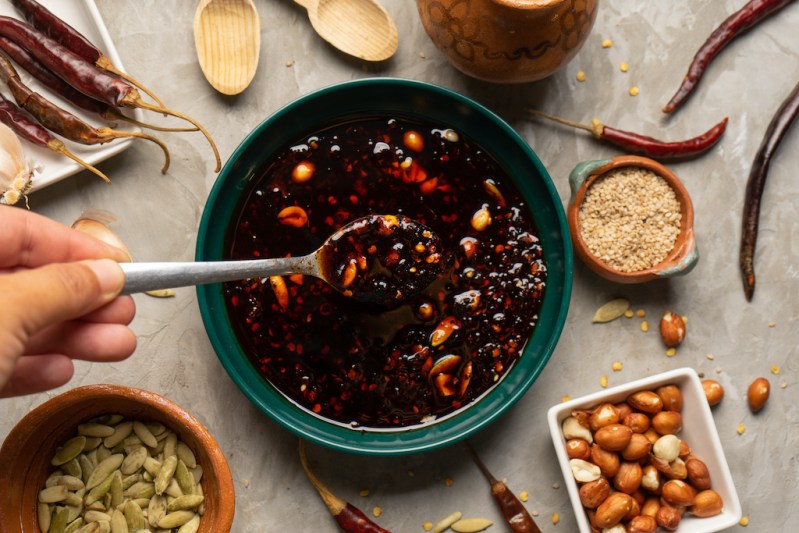When it comes to authentic and delicious Mexican cuisine, Rick Bayless knows what he’s doing. The famed chef and restaurateur is known for his numerous prestigious achievements, from winning the title of Bravo’s Top Chef Masters to his Public TV series, Mexico – One Plate as a Time. The man is a legend, and everything he cooks is equally legendary, turning the simplest condiment, like pickled onions, into something extraordinary.
This time, he’s blessed the world with his incredible salsa macha recipe, a nutty, tangy salsa that’s used typically as a topping for dishes instead of a dipping sauce. The salsa’s origins are debated, with hints of both Mexican and Asian touches, and the combination is remarkable. Made from dried chilis, crushed peanuts, garlic, and oil, salsa macha is perfect atop any number of dishes, from seafood to steak and everything in between.
Salsa Macha recipe
Ingredients:
- 1 1/2 cups olive oil
- 1/2 cup peeled garlic cloves
- 1/2 cup raw peanuts
- 2 ounces dried chiles, stemmed, seeded, and cut into roughly 1/2-inch pieces (start with guajillo and/or cascabel chiles with a few arbol chiles)
- 2-3 tablespoons untoasted sesame seeds
- 2 tablespoons vinegar (balsamic or another dark vinegar)
- 1/4 cup water
- 1/2 teaspoon Kosher salt
Method:
- In a medium saucepan, heat oil over medium-low, add garlic and peanuts.
- Cook gently, stirring occasionally, until garlic starts to soften and peanuts are slightly golden, about 10 minutes.
- Add chiles and sesame seeds, stirring until fragrant.
- Add vinegar, water, and salt. Stir for an additional minute, then remove from heat and allow to cool.
- Using an immersion or regular blender, pulse the mixture until the chiles, garlic, and peanuts are in small pieces.
Salsa Macha tips and tricks
- Salsa macha can be made with a wide variety of chilis, depending on flavor and heat preference. In his video, Chef Bayless says that this salsa was likely originally made using only arbol chilis, which are intensely hot. Depending on your desired heat level, you can add more or less of these. Feel free to mix and match dried chilis, depending on what you like.
- Vinegar choice is another part of this salsa recipe that’s completely customizable. Chef Bayless explains that he prefers to use a darker vinegar like balsamic or sweet sherry, but if you prefer to leave out the vinegar punch, you can do that as well.
- The water may seem like a needless addition, but the purpose it serves is essential in this salsa macha recipe as it will dissolve the salt and, therefore, help the other flavors to meld. Salt is unable to dissolve in oil, so the addition of water will dissolve the salt, which is crucial for optimum flavor.
- The consistency of salsa macha shouldn’t be completely smooth. To ensure authenticity, be sure to leave it slightly textured.
- When storing, place your salsa in a sealed container in the cupboard, ensuring the oil completely covers the rest of the ingredients.




